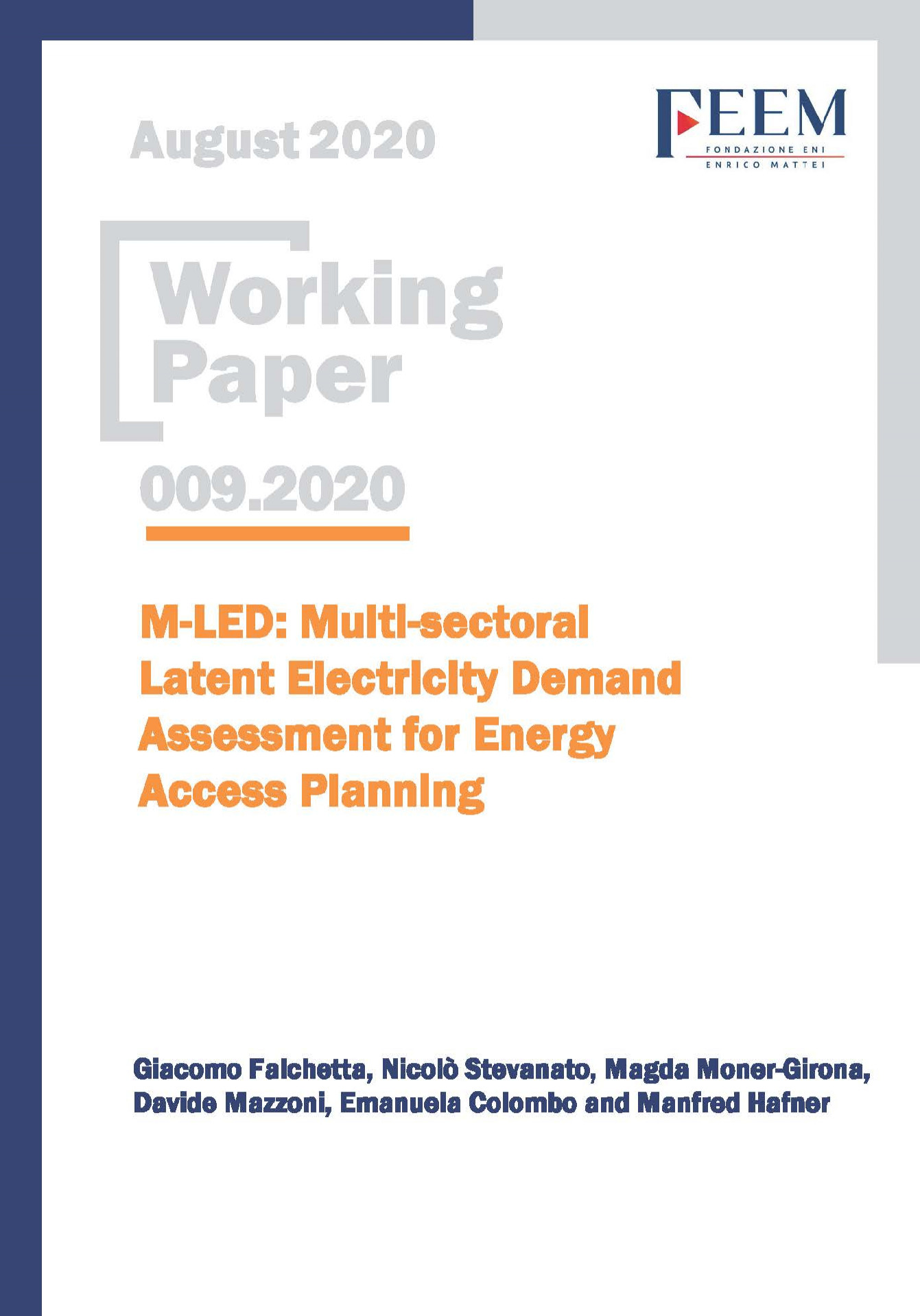M-LED: Multi-sectoral Latent Electricity Demand Assessment for Energy Access Planning

07.08.2020
Q4, Q41, O13
Electricity Access, Energy Demand, Rural Development, Bottom-up Modelling, Sub-Saharan Africa, Multi-sectoral Approach, Water-Energy-Food-Environment Nexus
Future Energy Program
Manfred Hafner
Globally about 800 million people live without electricity at home, over two thirds of which are in sub-Saharan Africa. Ending energy poverty is a key development priority because energy plays an enabling role for human wellbeing and economic activities. Planning electricity access infrastructure and allocating resources efficiently requires a careful assessment of the diverse energy needs across space, time, and sectors. However, because of data scarcity, most country or regional-scale electrification planning studies have been based on top-down electricity demand targets. Yet, poorly representing the heterogeneity in the electricity demand can lead to inappropriate energy planning, inaccurate energy system sizing, and misleading cost assessments. Here we introduce M-LED, Multi-sectoral Latent Electricity Demand, a geospatial data processing platform to estimate electricity demand in communities that live in energy poverty. The key novelties of the platform are the multi-sectoral, bottom-up, time explicit demand evaluation and the assessment of water-energy-agriculture development interlinkages. We apply the methodology to the country-study of Kenya. Our findings suggest that a bottom-up approach to evaluating energy needs across space, time, and sectors is likely to improve the reliability and accuracy of supply-side electrification modelling and therefore of electrification planning and policy.
***
Suggested citation: Falchetta, G., N. Stevanato, M. Moner-Girona, D. Mazzoni, E. Colombo, M. Hafner, (2020), ‘M-LED: Multi-sectoral Latent Electricity Demand Assessment for Energy Access Planning’, Nota di Lavoro 9.2020, Milano, Italy: Fondazione Eni Enrico Mattei
